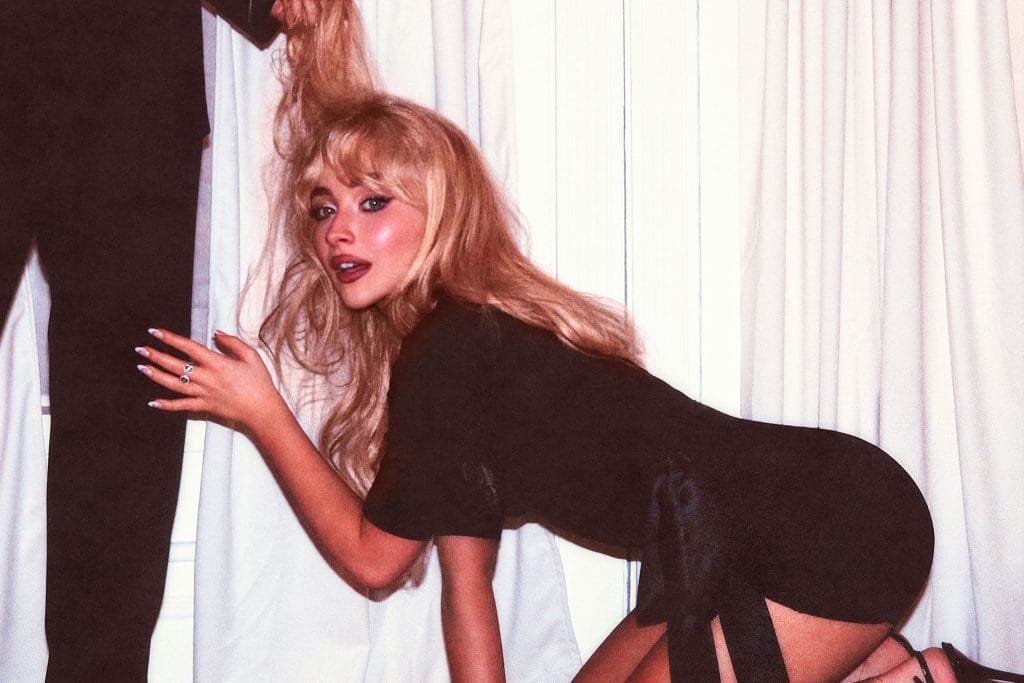Art is the best way of pickling time. Maybe that’s why Thomas Merton said art enables us to find ourselves and lose ourselves at the same time. It portrays emotions and ideas across time and space. Since the advent of motion pictures, art has revolutionised the way in which we connect and explore otherwise unknown stories from distant lands and communities.
But very often, whenever I watch a new film, a question pops up in my mind. Despite being the world’s largest film industry, which produces 1500 to 2000 films per year, why do I barely see women “look like me” slaying the Indian silver screen?
Colourism: An everyday humiliating ritual
Like benevolent patriarchy, deep-rooted casteism, ever-widening inequalities, and ever-depleting resources, alarmingly normalised body shaming, harsh colourist jokes and comments are essential ingredients of our humiliating sarcasm. That’s why every dark-skinned Indian child is told to scrub hard while taking a bath, even not to drink black tea, as that will darken your curse! Even the so-called ‘skin shade’ in our paint boxes looks strange to most of us. This normalised harassment is part of the average Indian psyche.
Like benevolent patriarchy, deep-rooted casteism, ever-widening inequalities, and ever-depleting resources, alarmingly normalised body shaming, harsh colourist jokes and comments are essential ingredients of our humiliating sarcasm. That’s why every dark-skinned Indian kid is told to scrub hard while taking a bath, even not to drink black tea, as that will darken your curse!! Even the so-called ‘skin shade’ in our paint boxes looks strange to most of us. This normalised harassment is part of the average Indian psyche.
To cut short, colourism is the prejudice or discrimination against individuals with dark skin tones, typically favouring fairer or lighter skin. Still in doubt? Pick any random advertisement preaching the idea of ‘the more white, more beautiful, more clean, thus more desirable’ propaganda. That’s why from the colonial notion of ‘The White Man’s Burden‘ by Rudyard Kipling, who said that, “being the superior race, it’s the duty of white men to civilise the inferior coloured races”, we haven’t moved much from there.
Understanding the genesis of colourism in India
India is known for tolerance. But hardly have we introspected the declining credentials of tolerance with respect to various diversities we have here. Along with the multiple historic battles, which are ongoing, and led by intersectionalities, the menace of colourism is very much prevalent in our society. The deep-rooted denial and disgust towards certain skin tones, particularly in the case of women, had always been a constraint. Being a dark-coloured working-class Indian woman, this is my vantage point here.
Sarcastically, Bonny from Kumbalangi Nights (a 2019 Malayalam movie) asks the girl, who fell in love with his friend, Sumesh, who is apparently dark-skinned, “so you don’t believe in external aesthetics?” Or when the fair-skinned actress gets dark makeup and plays Dalit, tribal, backward caste, working class, or marginalised characters, or where body shaming and derogatory remarks of comedians are welcomed as classic comedy notes, or where all the ideal, pixie maniac dream girls of Indian movies are so fair, thin and feminine, I look at myself. I look around me. I can’t relate to those imageries.
I seldom wonder when and how the mainstream media, movies and entertainment are going to celebrate the existence of diverse skin tones. Stratification and discrimination have always had something to do with the dignity and self-esteem of an individual, equality of opportunities, and equity. Colour-based discrimination is one of the most underrated and most traumatising everyday realities.
Colourism in Indian movies
Sarcastically, Bonny from Kumbalangi Nights (a 2019 Malayalam movie) asks the girl, who fell in love with his friend, Sumesh, who is apparently dark-skinned, “So you don’t believe in external aesthetics?” Or when the fair-skinned actress gets dark makeup and plays Dalit, tribal, backward caste, working class, or marginalised characters, or where body shaming and derogatory remarks of comedians are welcomed as classic comedy notes, or where all the ideal, pixie maniac dream girls of Indian movies are so fair, thin and feminine, I look at myself. I look around me. I can’t relate to those images.
In most cases, women characters serve as the rehabilitation centres of broken heroes, wherewith their beauty, they walk into the hero’s heart and just play a part in making him a phoenix. It would be right to recall Virginia Woolf’s comment in A Room Of One’s Own, as, “Women have served all these centuries as looking glasses possessing the magic and delicious power of reflecting the figure of man at twice its natural size.“
And seriously, I feel devastated after seeing this unrealistic majority of fair-skinned people, whom I don’t encounter in my locality, my living reality. It is an interesting paradox that, even after emphasising the invasion theories and sympathising with the stories of alienation and displacement of natives, we are still stuck with the colonial hangover.
The critical takeaway from “How to get away with murder”
Here I would like to introspect the American legal thriller called “How to get away with murder”, which starred Viola Davis as the lead role named, Annalise Keating, and gave me a relatable on-screen representation of dark-coloured women and nailed it. For me, it was a successful attempt at alternative narration by breaking the stereotype of “How does a beautiful woman look like?” This is a television series that premiered from 2014 to 2020. The series was created by Peter Nowalk and produced by Shonda Rhimes and ABC Studios. Viola Davis stars as Annalise Keating, a law professor at a prestigious Philadelphia university who, with five of her students, becomes entwined in a murder plot.
The legal wizard character of Annalise is leaving a groundbreaking legacy of being such a phenomenally complex character. She is a Black, bisexual who is struggling with the turmoil of alcoholism and childhood traumas and a milieu of haunting experiences. Being a clever lawyer and a master manipulator, she serves as a protector to her loved ones. But the show doesn’t profess to take Annalise as a perfect woman. Like all living beings, it portrays the good, bad, and ugly versions of hers without claims of flawlessness.
The very moment I came across the scene where Annalise Keating, wiping off her makeup, peeling her false eyelashes and taking off her wig, and facing the mirror as a shiny black-skinned, adamant, raw and powerful woman, I knew I wanted to watch her more. It was the rarest moment in my life as a film buff where I saw a lead role, which is dark-skinned, captivating, breathtaking, raw and sexy, which is the rarest possibility as per common aesthetical notion.
Later on, Viola commented in the same scene, “I said I would only take the job if I could take my wig off, but really that was a metaphor for something much larger. I’ll play a mysterious, sexualised woman if I can explore why she’s mysterious and sexual because that’s the only thing that’s going to make her human—and that’s the only thing I know to do.”
The possibility of inclusive narratives
In one of the scenes, Annalise Keating says, “Racism is built into the DNA of America“, I felt that would be true for India as well. The perpetual cycle of body shaming and cumulative harassment have been shattering the self-esteem and dignity of a lot of us. And yet, the entertainment industry is still propagating unrealistic and unjustifiable definitions of beauty and cleanliness. This directly results in an issue of representation and equality of opportunities.
On screen, Viola appears in colourful clothes, with much elegance; her carefully woven articulation and meticulous attitude just leave us in awe. Because for some reason, all the successful women on-screen were white, mostly with very feminine body language characters. I am sure my dark-skinned friends who read this will recollect those days when we chose a bright colour dress or makeup of our choice and got ruthlessly bullied by the apostles of fashion. I am not equating her stout and stubborn body language as the only way of being powerful, but that is also a powerful and elegant way of carrying oneself.
Quoting Viola herself, who became the first Afro-American woman to be awarded the Emmy for her role in the same series, “In my mind, I see a line. And over that line, I see green fields and lovely flowers and beautiful white women with their arms stretched out to me over that line. But I can’t seem to get there now. I can’t seem to get over that line.” Being a black woman who came a long way through her perseverance and hard work, the raw and brave acting done by Viola Davis really has created a noteworthy difference in her roles.
Also read: Un-Fair And Not So Lovely: Capitalism And Colourism In India
In a country where dark-coloured and fat comedians always get objectified side roles, merely being black or fat or having a deep bass voice for women is a joke; I need more Annalise so that I can feel cinematic experiences can be more accepting of the diversities. It is the civilisational duty of every artist to cultivate an inclusive and equitable ethos.
Also read: ‘Pele Colour’: How Casteism & Colourism Dictate Sartorial Choices
Smruthy V Sasidharan is a Rural Development practitioner by profession. After doing a Master’s in Rural Development from Tata Institute of Social Sciences, she worked with PRADAN NGO in Madhya Pradesh. She is interested in reflective writing on the ground realities of rural India. She is also interested in movies, music and nonfiction books. Smruthy can be found on Instagram, Facebook and Linkedin.
Featured image source: The World Economic Forum





